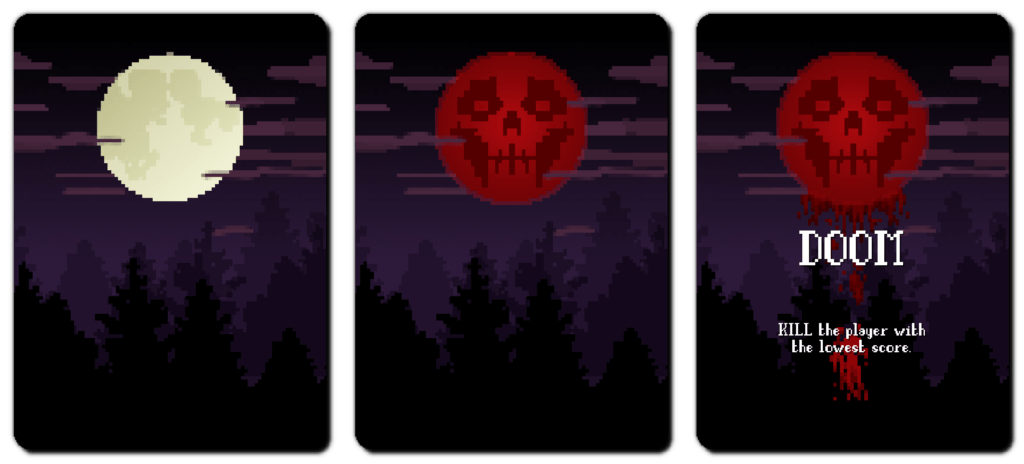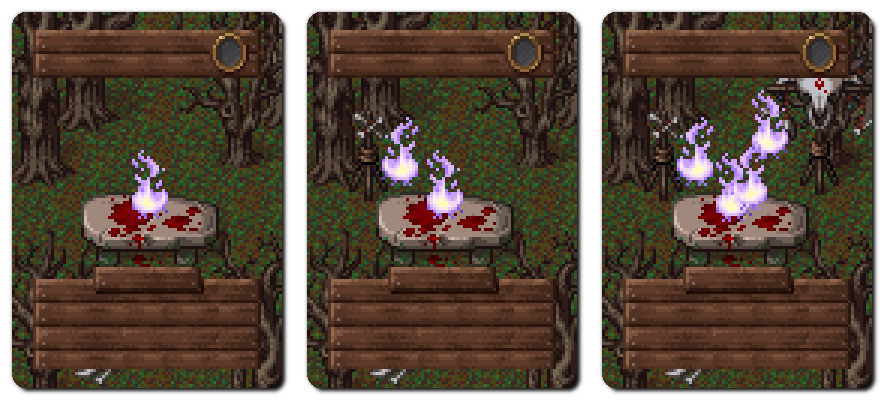As a matter of practice, it’s important to me that I keep demonstrating different ways to engage with games. Making games is a practice, and when you can look at game assets and consider ways to apply them, you’ll begin to see how much of game design is stuff you can do. Therefore, on this blog I’m making it a project to regularly grab some game assets I couldn’t make myself, that are made for game designers to work with, and see what ideas they inspire.
Okay, this time it’s a simple one: This month, my goal, as a game maker, is to get Camp Osum into prototyping.

If you’re not familiar with Camp Osum, it’s a competitive draft horror game I originally made for Asylum Jam 2017. In this game, each player takes on the role of a camp counsellor roaming around the grounds, looking for things that build their place in the story, rousing the ghosts of the camp and hopefully not getting killed. Eventually, there’s only one player left, as the other players, now some of the ghosts, try to force that player into joining them, while they try and escape.
A big part of Camp Osum‘s life has been committing to boundaries on it; it was made for a jam, and the original draft up on Itch.Io is up there as it was at the end of the jam. I know that in my situation it’s very easy to work on things in private and keep things like prototypes and concepts hidden until they’re nice and polished in ways you, the audience can praise me for. That’s why, even though I think it looks terrible, and it was made in Word, like a lot of fast prototypes, you can go look at it.
Last year I spent a month working on the card face (while doing other stuff, because October is the end of the semester work-wise). This month, it’s time to pick the project up again and get it to the next stage, of being an operational prototype.
What the Goals?
What I want to have at the end of the month is the following:
- A twitter thread showing when I worked on the game and generally what I did
- A Gamecrafter entry for the game that includes
- The Game Material (cards and any tokens necessary)
- Packaging (box and storage option)
- The Rule Book (both the rules text and how it’s presented)
- A standardised template for the game language that can be easily used
- A receipt for an order for a physical prototype or two of Camp Osum
- A Print-and-Play file for the game to give to my Patreon Patrons
That’s a clear list of objectives and I can already see myself with questions. As originally conceived, Camp Osum relied on only cards, because it was going to be distributed on DriveThruCards, which meant a strictly digital rulebook was my best option. Using GameCrafter, it might be able to include a rulebook in the box – and that rulebook could be small or large, depending on the storage solution. Do I want to include tokens in the game, now? Were there choices in the design to keep things to cards that can be done better with other design components?
Asking questions and making choices is pretty much what this practice is about.

Why The Goals?
I want to make it clear that you can do this.
I want to show you how much of game-making is just… playing around. Practicing things. I didn’t train in how to use the graphics programs I did – I just played around with them until I learned how to do things I wanted. I didn’t learn how to do pixel art, I just played with pieces until I had something that worked. The engine that underpins Camp Osum came out of just playing around with an existing game and its format (Rochester draft from Magic: The Gathering).
I got involved in a jam about making horror games that weren’t about treating mental health as the reason for the horror, which I’d never done before. I tried to come up with a model for play that generated tension, and stumbled on things like closing your eyes at some points, and about hiding information that way.
And yeah, some of these projects are going to take time to work on. I imagine I could smash out Camp Osum in a week, as a project, but it wouldn’t be as polished, it wouldn’t be as refined if I did that. If I make a game in a week, and you want to make games, seeing that kind of progress might be discouraging. Seeing nothing but final results can make it seem like these games are coming from The Games Fairy, and not about the step by step process.
The next step for Camp Osum after this is to take this game into a situation with people who don’t know the game and see what they notice about it, and about the way the cards are worded. And for that, I need the physical copy, and that’s why this is the next step.
1 Trackback